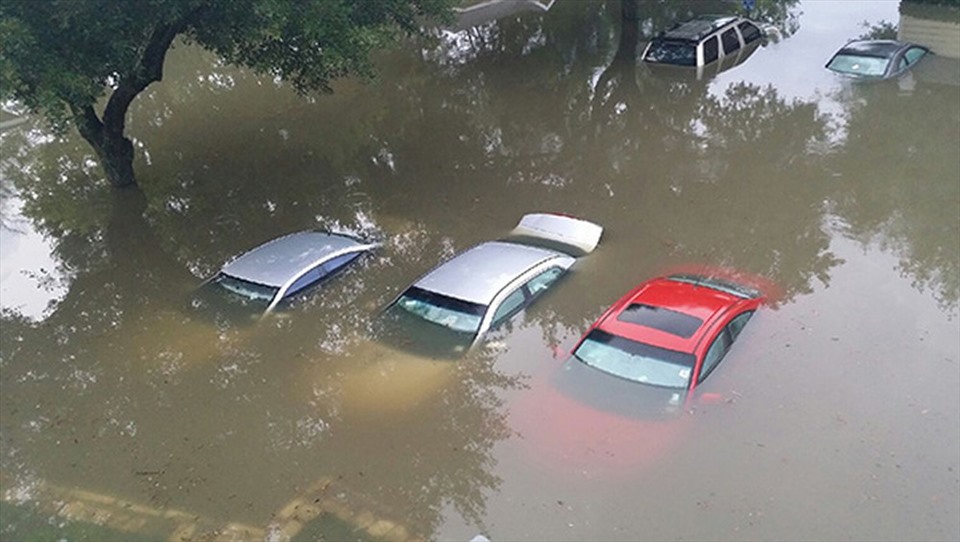Is it easy to recognize flooded cars?
What is hydraulic for cars?
Water shock is a phenomenon where the vehicle is flooded with water into the air intake of the engine, causing the vehicle to stall suddenly.
In this case, if the driver intentionally starts the engine, water will be sucked deep into the engine, making the pistons unable to move along the cylinder, but still under the thrust of the camshaft, bending the piston rod, crankcase and bearing. damaged crankshaft; heavier when the arm is bent too much, it will break, this break will puncture the engine wall…
The consequences of a water attack are often very severe because damage is located in the engine – the heart of the vehicle. The repair cost in the case of water damage is usually very large, at least a few tens of millions of dong when only having to change the side arm, many can be up to several hundred million dong if it is unfortunate to have to replace both the new engine assembly and the entire system. electrical system.
Flooded cars, no matter how beautiful they are, lose a lot of value
After the engine, the electrical system is the next most affected component. When immersed in water, the electrical system can burn, rust the connections or affect the signals, buttons or controls of equipment such as lights, entertainment systems, electric seats, speakers …
Normally, when the electrical system is flooded, it is necessary to replace all the conductors and important parts to avoid unfortunate situations such as short-term fires. However, this measure is not really exhaustive.

Flooding is a headache for drivers when the rainy season comes. Photo: Tuan Nguyen
How to identify a car that has been hit by a water attack?
Hear the explosion of the machine
If the car has been repaired or changed, the engine sound will be strange, not smooth and feel unreliable. If you do not believe in your own judgment, ask a skilled craftsman to accompany you to assist.
Check underbody and exhaust
Metal parts under the car are easy to rust if flooded, especially the screws that catch the exhaust pipe to the body. Newer cars have a heat shield, which is caught on the exhaust pipes, you have to remove this part to see the screws. These screws are usually yellow-brown, because the temperature at the machine position is very high, so if removed, there will be traces left.
Watch the headlights
If the vehicle has been submerged in water, the headlight cover will show signs such as water marks, yellowing, blurring, steam or scratches due to being removed to clean.
In addition, you can check the screws in the closed position in the trunk. If they are rusty, then most likely the car has been flooded. Also, feel and turn the carpet over to see if there’s mud there to strengthen the “evidence”.
Observe all screws and bolts to start the machine
Observing all screws and bolts will partly help you know if the engine has been removed for repair or not. If the screws are shiny, rusty or scratched and there are clamps and unscrewing marks, the engine has probably been taken out for repair.
Check the car’s interior
A car with a distinct musty smell is likely to have been flooded or water damaged. To hide, the owner of the car or garage will probably spray a lot of perfume to cover the smell. Therefore, you just need to get in the car, close the door and turn off the air conditioner, if the smell of perfume is too strong or musty, you should “avoid” the car.
It is necessary to check and observe more closely with vehicles showing signs of being “engineered” because of water strikes. Turn the floor mats over, check the seat belt stalks, under the brake pedals, accelerator pedals, bolts, under the seats, dashboards, screens, etc. If they’ve been soaked in water, they’ll turn yellow. , patchy or intermittent operation.
Test drive the car
If observation is not enough for you to draw conclusions, feel the performance of the car by testing it. First, you start the machine to see if there is smoke from the exhaust pipe and listen to see if the explosion is unusual.
Then, accelerate to feel the accelerator, brake system, steering system… Don’t forget to pay attention to the fuel consumption of the car to see if it consumes much. After running for about 10 minutes, open the bonnet to check the temperature of the machine, if it is warm and still can be touched, the machine is still intact.
at Blogtuan.info – Source: danviet.vn – Read the original article here



